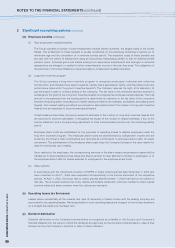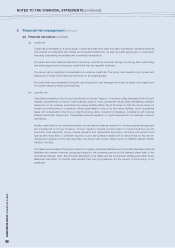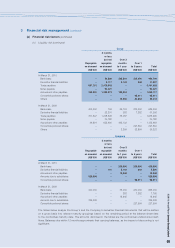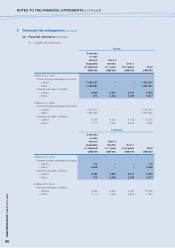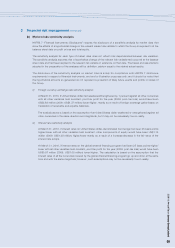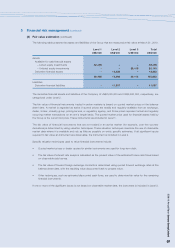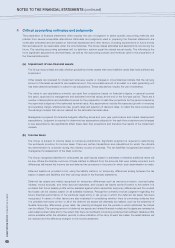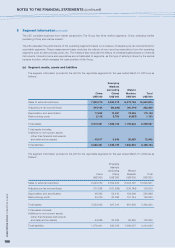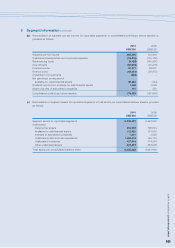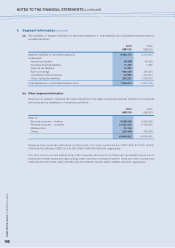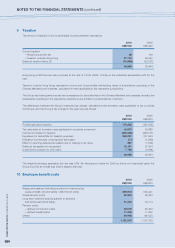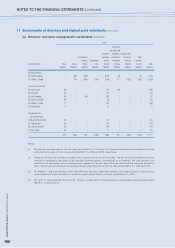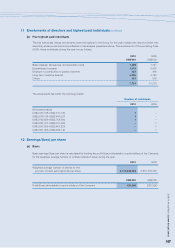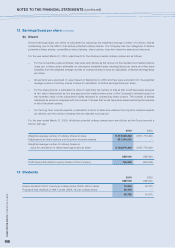Lenovo 2010 Annual Report Download - page 100
Download and view the complete annual report
Please find page 100 of the 2010 Lenovo annual report below. You can navigate through the pages in the report by either clicking on the pages listed below, or by using the keyword search tool below to find specific information within the annual report.
2009/10 Annual Report Lenovo Group Limited
98
NOTES TO THE FINANCIAL STATEMENTS (continued)
98
4 Critical accounting estimates and judgments
The preparation of financial statements often requires the use of judgment to select specific accounting methods and
policies from several acceptable alternatives. Estimates and judgments used in preparing the financial statements are
continually evaluated and are based on historical experience and other factors, including expectations of future events
that are believed to be reasonable under the circumstances. The Group makes estimates and assumptions concerning the
future. The resulting accounting estimates will, by definition, seldom equal the related actual results. The following is the
more significant assumptions and estimates, as well as the accounting policies and methods used in the preparation of
the financial statements:
(a) Impairment of non-financial assets
The Group tests at least annually whether goodwill and other assets that have indefinite useful lives have suffered any
impairment.
Other assets are reviewed for impairment whenever events or changes in circumstances indicate that the carrying
amount of the asset exceeds its recoverable amount. The recoverable amount of an asset or a cash-generating unit
has been determined based on value-in-use calculations. These calculations require the use of estimates.
The value-in-use calculations primarily use cash flow projections based on financial budgets, in general covered
five years, approved by management and estimated terminal values at the end of the five-year period. There are a
number of assumptions and estimates involved for the preparation of cash flow projections for the period covered by
the approved budget and the estimated terminal value. Key assumptions include the expected growth in revenues
and operating margin, effective tax rate, growth rates and selection of discount rates, to reflect the risks involved and
the earnings multiple that can be realized for the estimated terminal value.
Management prepared the financial budgets reflecting actual and prior year performance and market development
expectations. Judgment is required to determine key assumptions adopted in the cash flow projections and changes
to key assumptions can significantly affect these cash flow projections and therefore the results of the impairment
reviews.
(b) Income taxes
The Group is subject to income taxes in numerous jurisdictions. Significant judgment is required in determining
the worldwide provision for income taxes. There are certain transactions and calculations for which the ultimate
tax determination is uncertain during the ordinary course of business. The tax liabilities recognized are based on
management’s assessment of the likely outcome.
The Group recognizes liabilities for anticipated tax audit issues based on estimates of whether additional taxes will
be due. Where the final tax outcome of these matters is different from the amounts that were initially recorded, such
differences will impact the income tax and deferred tax provisions in the period in which such determination is made.
Deferred taxation is provided in full, using the liability method, on temporary differences arising between the tax
bases of assets and liabilities and their carrying values in the financial statements.
Deferred tax assets are mainly recognized for temporary differences such as warranty provision, accrued sales
rebates, bonus accruals, and other accrued expenses, and unused tax losses carried forward to the extent it is
probable that future taxable profits will be available against which deductible temporary differences and the unused
tax losses can be utilized, based on all available evidence. Recognition primarily involves judgment regarding the
future financial performance of the particular legal entity or tax group in which the deferred tax asset has been
recognized. A variety of other factors are also evaluated in considering whether there is convincing evidence that
it is probable that some portion or all of the deferred tax assets will ultimately be realized, such as the existence of
taxable temporary differences, group relief, tax planning strategies and the periods in which estimated tax losses
can be utilized. The carrying amount of deferred tax assets and related financial models and budgets are reviewed at
each balance sheet date and to the extent that there is insufficient convincing evidence that sufficient taxable profits
will be available within the utilization periods to allow utilization of the carry forward tax losses, the asset balance will
be reduced and the difference charged to the income statement.




